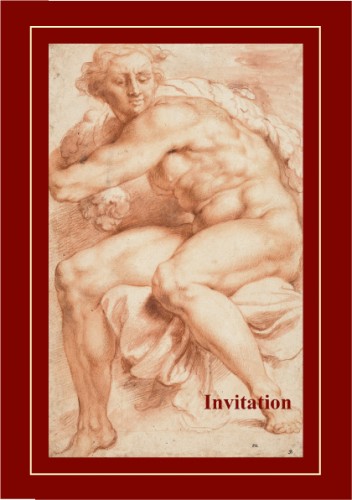The Centrum Rubenianum (Centrum voor de Vlaamse Kunst van de 16de en de 17de Eeuw) is proud to announce the publication of a new volume in the Corpus Rubenianum Ludwig Burchard series, written by Jeremy Wood, a leading expert on Rubens’s drawings. The presentation of XXVI/2, part 3: Copies and Adaptations from Renaissance and Later Artists: Italian Artists. III. Artists working in Central Italy and France will take place at the National Gallery in London on July 5th, 2011. Part 3 highlights Rubens’s creative copies and interpretations of works by leading Renaissance artists Leonardo and Michelangelo and others artists as Primaticcio and Muziano amongst others. CODART members are kindly invited to this event. Please download the invitation (pdf) here.
The present volume is the last of three devoted to the numerous painted and drawn copies that Rubens made – or retouched – after sixteenth-century Italian art. In this case, the focus is on artists who worked in Florence and Rome, above all Leonardo da Vinci and Michelangelo Buonarotti, as well as those who travelled abroad, of whom the most important for Rubens was Francesco Primaticcio, an artist employed for some years at the French court. Rubens’s copies from Michelangelo’s Sistine Ceiling and Last Judgment show him recording details that attracted his interest when in Rome as a young man. By contrast, the adaptations after Primaticcio were made from copies that were brought to Antwerp in the 1630s. The volume therefore covers the range of Rubens’s interest in Italian art from his early years to the end of his career. In addition, copies after renaissance imitations of the antique and anonymous works are also included.
The extensive volume on Rubens’s copies and adaptations from Italian artists is divided into three parts: (1) Raphael and his School; (2) Titian and North Italian Artists; and (3) Artists working in Central Italy and France, containing approximately 300 entries in total. The complete volume will thus focus on Rubens’s extensive study of Renaissance art of the sixteenth century. This lasted throughout his life, and not just when he was a student in Antwerp during the 1590s, when he relied on engravings as reference material to make enlarged painted adaptations from Raphael and Michelangelo. The core of Rubens’s full-size painted copies were made in the late 1620s, when he was in Madrid and London and wanted records of Italian works, mostly by Titian, that he could not buy for his own collection. The bulk of the catalogue entries deal with Italian drawings that Rubens bought during his travels and which, it will be argued, were kept and retouched by him throughout his career. This material documents Rubens’s extensive knowledge and interest in the work of Raphael, Titian, Michelangelo, Giulio Romano and Correggio, among many others.
The entries on the retouched drawings reconstruct one of the earliest and largest collections of graphic art assembled by a late Renaissance painter, as well as revealing Rubens’s sophisticated and complex dialogue with Italian art. The first part, Rubens after Raphael, was published in January 2010. Part 2 was launched December 2010. The third and last volume will thus be presented this summer.

